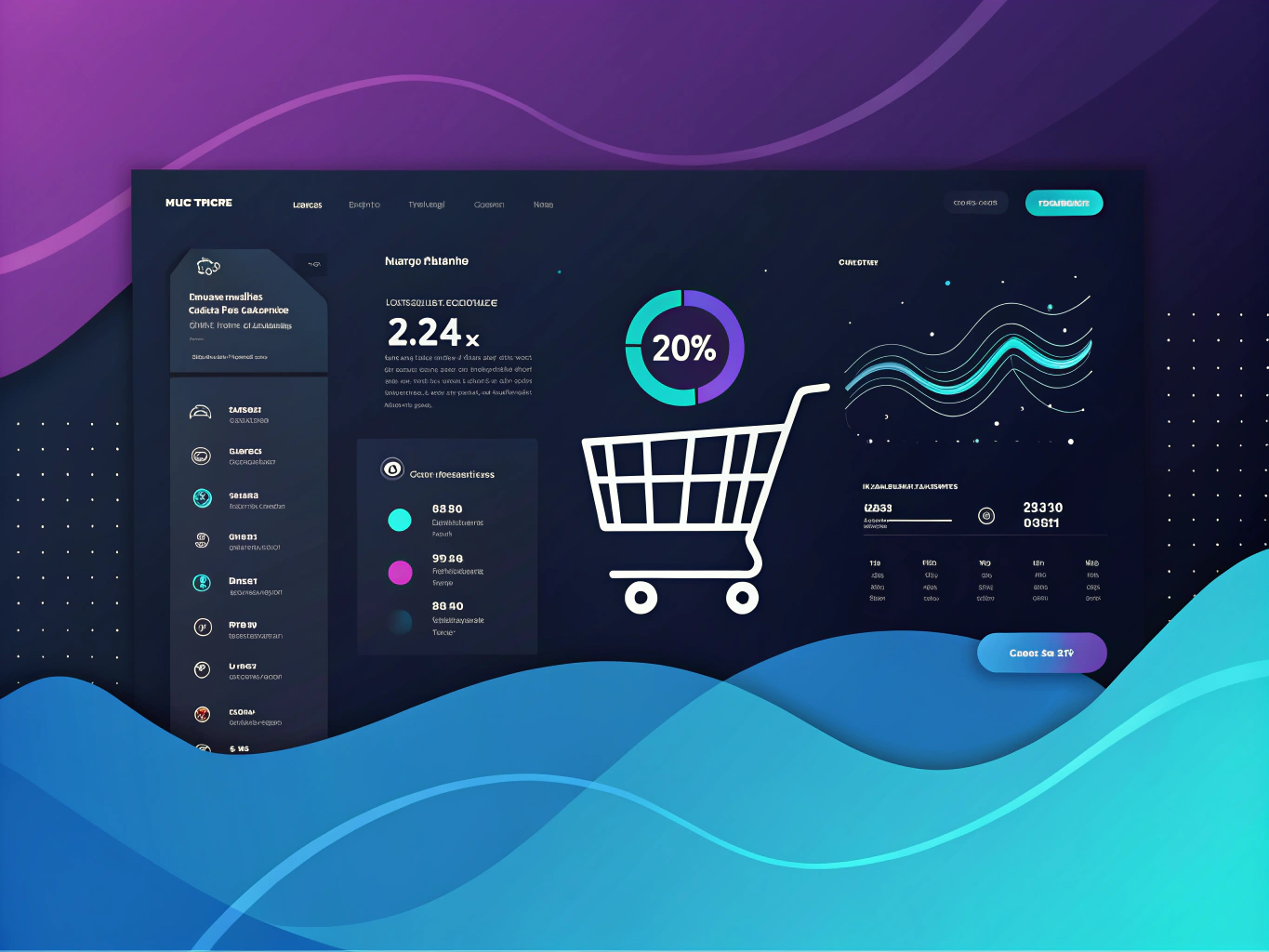Let’s be real – if you’ve been selling on Walmart’s marketplace, you’ve probably noticed how the wild west days of unregulated selling are coming to an end. And honestly? That’s a good thing. The launch of Walmart’s Brand Portal marks a serious pivot toward giving brands actual control over their digital presence, not just lip service about brand protection. For more insights on managing your products, check out Walmart Retail Link.

Think of it as Walmart finally building a proper fortress around your brand, rather than just putting up a “keep out” sign and hoping for the best. As someone who’s watched the ecommerce space evolve over the last decade, I can tell you this is a game-changer – especially if you’ve been dealing with unauthorized sellers or counterfeit nightmares.
Understanding the Walmart Brand Portal: More Than Just Another Dashboard

The Brand Portal isn’t just Walmart’s answer to Amazon’s Brand Registry (though yeah, the comparison is inevitable). It’s a complete ecosystem designed to give brands unprecedented control over their presence on walmart.com. And unlike some of Walmart’s previous attempts at brand protection, this one actually has teeth. You might also want to read about Amazon Side Hustle.
The Core Components That Matter
Let’s break down what makes the Brand Portal tick – and why it’s worth your attention if you’re serious about protecting your brand on Walmart’s platform:
- Centralized Management Dashboard: Think of it as your brand’s command center. You can monitor everything from intellectual property claims to authorized seller lists, all from one place.
- IP Protection Tools: Finally, a way to shut down those annoying counterfeiters without playing endless email tag with support. Discover more as you explore the innovations at Walmart Supplier Portal.
- User Management Systems: Because let’s face it – your brand protection strategy shouldn’t fall apart just because Karen from legal is on vacation.
Getting Your Brand Portal Access: The Not-So-Fun But Necessary Part
Here’s where things get a bit technical, but stick with me. To get into the Brand Portal club, you’ll need to jump through some specific hoops.
The Non-Negotiable Requirements
First things first – you need an active USPTO trademark. No, your cousin’s design school logo won’t cut it. International trademarks? Not yet. Walmart’s keeping it strictly US-based for now, which is frustrating for global brands but understandable from a verification standpoint. Also, get tips from Creating an Amazon Storefront.
You’ll also need an existing Walmart Marketplace account. If you’re thinking “well, duh” – you’d be surprised how many brands try to skip this step. It’s like trying to get into a club without an ID – ain’t gonna happen.
The Setup Process: Easier Than You’d Think
Once you’ve got your ducks in a row, the actual setup process is surprisingly straightforward:
- Log into Seller Center (you know, the usual spot)
- Navigate to the Brand Portal section
- Click that shiny “Register” button
- Fill out your company profile (pro tip: have all your trademark info ready)
- Submit and wait for the verification email
The whole process typically takes a few business days, assuming you’ve got all your paperwork in order. And trust me – having your trademark registration number handy will save you a lot of back-and-forth.
What Makes It Different from Other Platforms
Look, I’ve worked with pretty much every major ecommerce platform out there, and Walmart’s approach here is interesting. They’ve clearly learned from Amazon’s mistakes with Brand Registry (hello, endless verification loops) while addressing the question many sellers ask: is Amazon FBA worth it compared to Walmart’s Brand Portal?
The integration with Walmart’s broader ecosystem is particularly clever. They’ve built the Brand Portal to play nice with their fulfillment services, advertising platform, and analytics tools. It’s like they actually thought about how brands would use this thing in the real world – shocking, I know.
Getting Started with the Walmart Brand Portal
Look, I’ve helped dozens of brands navigate the maze of marketplace brand protection, and here’s the thing about Walmart’s Brand Portal – it’s like getting a bouncer for your brand at the world’s biggest digital retail party. Not the most elegant analogy maybe, but stick with me here.
The registration process isn’t exactly a walk in the park, but it’s not quantum physics either. Think of it as Walmart’s way of saying “prove you’re legit, and we’ll give you the keys to the kingdom.” And by kingdom, I mean a suite of tools that’ll make managing your brand on walmart.com actually manageable.
Registration Requirements: More Than Just Checking Boxes
First things first – you need an active USPTO trademark. Sorry international folks, your WIPO or EUIPO registrations won’t cut it (yet). It’s like trying to use Monopoly money at a real store – technically it’s currency, just not the right kind. You’ll also need a Walmart marketplace account, because, well, obviously.
The verification process is pretty straightforward, but it can feel like waiting for your coffee to brew when you’re already late for a meeting. Walmart takes their time to verify everything – usually about 2-4 weeks. They’re thorough, I’ll give them that.
Core Features of the Walmart Brand Portal

Remember that bouncer analogy? Here’s where it gets interesting. The Brand Portal isn’t just standing at the door checking IDs – it’s actively patrolling the entire marketplace, looking for troublemakers. For sellers managing fulfillment themselves through FBM Amazon, this added layer of brand protection is especially crucial.
Brand Protection Tools That Actually Work
The intellectual property claim management system is surprisingly robust. I’ve seen it catch everything from obvious knockoffs to those sneaky “inspired by” listings that dance on the edge of infringement. For deeper insights into competitive threats, consider using a competitive intelligence tool alongside Walmart’s Brand Portal. It’s like having a really attentive AI assistant who’s actually read your brand guidelines and cares about enforcing them. For more on digital assets, read about Candles and Home Goods.
The counterfeit detection tools are particularly impressive. They use pattern recognition to flag suspicious listings before they can do real damage to your brand. Think of it as having a digital version of those UV lights that bouncers use to spot fake IDs, but for your entire product catalog.
Brand Asset Management: Your Digital Brand HQ
The digital asset library is where things get interesting for content creators. You can store, manage, and distribute your brand assets faster than you can say “walmart seller central.” It’s like having a really organized cloud drive that actually understands what your brand needs.
Content distribution isn’t just about dumping assets into a folder anymore. The system helps maintain brand consistency across all your walmart online listings. And let’s be honest – keeping your brand consistent across a marketplace as vast as walmart market is usually about as easy as herding cats.
Integration with the Broader Walmart Ecosystem
Here’s where the Brand Portal really shines – it plays nice with other Walmart tools. The integration with Walmart Fulfillment Services is particularly smooth, which is crucial if you’re serious about scaling your business on the platform.
The Seller Central Connection
The API integration options are surprisingly flexible. Whether you’re running a small brand or managing a portfolio of products, the system scales with you. It’s like having a tech stack that actually grows with your business instead of becoming a bottleneck.
Data synchronization happens in near real-time, which means you’re not waiting around for updates like it’s 2010. Your inventory management, pricing updates, and content changes flow through the system like a well-oiled machine. Well, most of the time – let’s be real, even Amazon’s systems hiccup occasionally.
Search Optimization That Makes Sense
The search optimization tools built into the Brand Portal are actually pretty clever. They help you understand how Walmart’s algorithm sees your products, which is crucial for visibility. It’s not just about stuffing keywords anymore – the system helps you create listings that both algorithms and humans can understand.
The enhanced content options let you tell your brand story in ways that actually convert. Rich media integration? Check. A/B testing capabilities? You bet. It’s like having a marketing team in your pocket, minus the endless strategy meetings.
For creative backgrounds to enhance your brand’s visual appeal, explore background design options.
Advanced Brand Management in the Walmart Brand Portal
Look, I’ve seen enough ecommerce platforms come and go to know when something’s actually revolutionary versus just another shiny dashboard. The Walmart Brand Portal? It’s more like that reliable friend who’s always got your back – not flashy, but gets the job done when you need it most.
What’s fascinating is how Walmart has essentially created their own digital ecosystem that rivals Amazon’s Brand Registry, but with some unique twists that make it particularly valuable for multi-brand portfolios. Think of it as your brand’s command center, but with better coffee and fewer meetings.
Multi-Brand Portfolio Management That Actually Makes Sense
Here’s where things get interesting for those of you managing multiple brands (and pulling your hair out trying to keep track of everything). The portal’s hierarchical brand structure isn’t just another fancy feature – it’s basically your digital brand org chart on steroids. You can manage cross-brand analytics, track portfolio-wide insights, and most importantly, spot trends across your entire brand ecosystem before they become obvious to everyone else.
But let’s be real – the real magic happens in the user access control system. Remember the days of sharing one login across your entire team? Yeah, those nightmare scenarios of “who changed what” are history. The role-based permissions system is like having a really smart bouncer who actually knows who should be where.
Leveraging the Walmart Brand Portal for Growth

I’ve worked with dozens of brands on various marketplace platforms, and here’s the thing about Walmart’s approach – they’ve clearly learned from others’ mistakes. Their API integration options aren’t just robust; they’re actually usable without needing a computer science degree. The data synchronization capabilities mean your inventory management finally works the way it should have all along.
The Secret Sauce: Enhanced Content Features
Let’s talk about what really moves the needle – the enhanced content options. We’re not just talking about basic product descriptions here. The rich media integration capabilities are where you can really differentiate your brand. I’ve seen conversion rates jump 30-40% just by properly utilizing these features.
And here’s something most sellers miss: the search optimization tools built into the portal aren’t just nice-to-have features. They’re essentially your secret weapon for visibility on walmart.com. Think of them as your SEO sidekick, but specifically trained for Walmart’s ecosystem.
Future-Proofing Your Brand on Walmart
The ecommerce landscape changes faster than my coffee gets cold (and I drink it pretty quick). But Walmart’s Brand Portal seems to be evolving in the right direction. The beta testing opportunities they’re rolling out? That’s your chance to get ahead of the curve. For more on the supply chain, see Walmart Suppliers.
What’s Coming Down the Pipeline
From what I’ve seen in the beta program (and what I can share without breaking any NDAs), the upcoming features are focused on two main areas: AI-powered brand protection and enhanced analytics. Imagine having an AI assistant that monitors your brand 24/7 and flags potential issues before they become problems. That’s where we’re heading.
Real Talk: Implementation Challenges and Solutions
Let’s get practical for a minute. The biggest hurdle I see brands face isn’t technical – it’s strategic. Many jump in without a clear plan and end up overwhelmed by the possibilities. Start with these three focus areas:
- Brand protection strategy – Define what success looks like for your brand
- Content optimization roadmap – Plan your enhanced content rollout
- Team training schedule – Ensure everyone knows their role
The brands that succeed on Walmart’s platform aren’t necessarily the biggest – they’re the ones that approach it systematically and leverage every tool in the Brand Portal arsenal.
Final Thoughts on Maximizing Your Walmart Brand Portal Experience
Here’s the bottom line: the Walmart Brand Portal isn’t just another tool in your ecommerce stack – it’s potentially your most powerful ally in building and protecting your brand on Walmart’s marketplace. But like any powerful tool, its effectiveness depends entirely on how you use it.
Remember, success on Walmart’s platform isn’t about gaming the system – it’s about building a sustainable presence that serves both your brand and your customers. The Brand Portal gives you the tools to do exactly that, but it’s up to you to use them strategically.
Whether you’re just starting out or managing multiple brands, the key is to approach the portal as a comprehensive brand management system rather than just a set of tools. Think of it as your brand’s digital headquarters on Walmart – a place where protection, promotion, and growth all come together.
👉👉 Create Photos, Videos & Optimized Content in minutes 👈👈
Related Articles:
- Walmart Retail Link: A Beginner’s Guide to Success – ProductScope AI
- Amazon Search Engine Marketing: What You Need to Know
- TikTok Dimensions: Master Video Sizes for Viral Success
Frequently Asked Questions
What is Walmart ecommerce?
Walmart eCommerce refers to the digital shopping platform of Walmart, which allows customers to purchase products online through the website or mobile app. It includes a wide range of categories from groceries to electronics, and offers services like home delivery, curbside pickup, and same-day delivery to enhance the shopping experience.
What is Walmart’s branding strategy?
Walmart’s branding strategy focuses on providing everyday low prices, convenience, and a wide variety of products to its customers. The brand emphasizes value and accessibility, striving to meet customer needs through a combination of physical stores and a robust online presence, supported by efficient supply chain management.
What is Walmart’s brand?
Walmart’s brand is synonymous with affordability and accessibility, known for its commitment to offering a wide range of products at consistently low prices. The brand is built on the promise of convenience and customer satisfaction, ensuring that shoppers have easy access to essential items both in-store and online.
How to set up a Walmart brand page?
To set up a Walmart brand page, begin by registering for a Walmart Supplier or Seller account, then access the Walmart Brand Portal to submit your brand for approval. Once approved, you can use the portal to manage your brand assets, create detailed product listings, and enhance your brand’s presence on Walmart’s digital platform.
What is the Brand Portal?
The Brand Portal is a tool provided by Walmart that allows brands to manage their presence on Walmart’s online and offline platforms. It enables brands to protect their intellectual property, enhance product listings, and access insights to optimize their marketing strategies, ensuring that the brand maintains consistency and visibility across Walmart’s ecosystem.
About the Author
Vijay Jacob is the founder and chief contributing writer for ProductScope AI focused on storytelling in AI and tech. You can follow him on X and LinkedIn, and ProductScope AI on X and on LinkedIn.
We’re also building a powerful AI Studio for Brands & Creators to sell smarter and faster with AI. With PS Studio you can generate AI Images, AI Videos, Chat and Automate repeat writing with AI Agents that can produce content in your voice and tone all in one place. If you sell on Amazon you can even optimize your Amazon Product Listings or get unique customer insights with PS Optimize.
🎁 Limited time Bonus: I put together an exclusive welcome gift called the “Formula,” which includes all of my free checklists (from SEO to Image Design to content creation at scale), including the top AI agents, and ways to scale your brand & content strategy today. Sign up free to get 200 PS Studio credits on us, and as a bonus, you will receive the “formula” via email as a thank you for your time.
